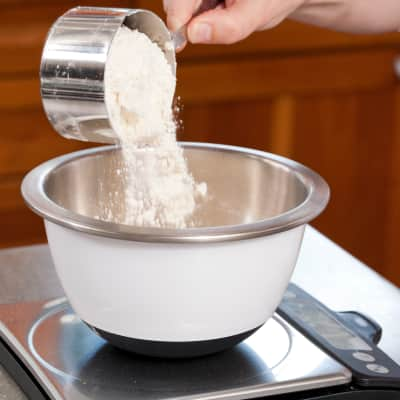With its active bacteria and regular “feeding” schedule, the idea of making sourdough starter scares a lot of home cooks. But when senior editor (and resident bread expert) Andrew Janjigian set out to develop an easy-to-follow recipe for sourdough starter, we discovered that it’s not so scary at all. You just need flour, water, and time—which is minimal once you get going—for the satisfaction of being able to make bread (and lots of other baked goods) from scratch. So, we’ve decided it’s time to bust some of the biggest myths about sourdough starter, once and for all.
5 Myths About Sourdough Starter, Debunked
Published Sept. 19, 2016.

Myth 1: You have to add yeast
Sourdough starter is a culture of yeast and bacteria, but that doesn’t mean you need to add commercial yeast. In fact, the only ingredients are flour (we found that a combination of whole-wheat and all-purpose create the optimal starter) and water. The yeast and bacteria are already present in the flour, but the process of making and maintaining a starter wakes them up and feeds them regularly so they can continue to grow.
Myth 2: Sourdough starter requires fancy water
The key to sourdough starter success is using water without chlorine, which can cause the starter to die. While bottled water is chlorine-free, you can also use filtered tap water for our sourdough starter recipe.
Myth 3: It’s like having a pet
While some people lovingly name their sourdough starters, that doesn’t mean you need to feed it as often as your four-legged friends. In the early stages of developing the starter, you should feed it every 24 hours, but after 10 to 14 days, you can move to the maintenance phase, keeping your starter in the refrigerator and feeding it just once a week. And if you do miss one of the daily feedings at the beginning, don’t worry—just be sure not to go more than 48 hours without a feeding.
Myth 4: Specialized equipment equals better sourdough starter
Some sourdough starter recipes suggest using a temperature-controlled bread proofer to create the right environment for the bacteria in the flour to flourish, but this isn't really necessary. As long as your kitchen is about 70 degrees—what we consider to be room temperature—you can leave the starter on the counter for its five-hour post-feeding resting period and then store it in the refrigerator. As for the rest of the steps in Andrew’s recipe, ordinary kitchen equipment is all you’ll need.
Myth 5: It’s difficult to know when sourdough starter is ready for use
As a rule of thumb, sourdough starter is ready for baking when it’s doubled in size, about 18 to 24 hours after it’s been fed. If you think it’s good to go but want an easy way to be sure, all you need to do is drop a spoonful of starter into a bowl of water. If the starter floats, you’re ready to bake, but if it sinks, you should wait another hour and try again.
Have a question about making sourdough starter? Let us know on Twitter @testkitchen and #Cookslllustrated.
Be first to know about new stories! Sign up for our newsletter for revolutionary recipes and insightful reviews.











